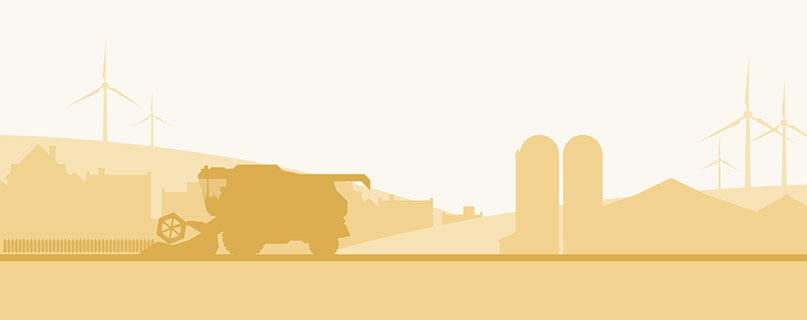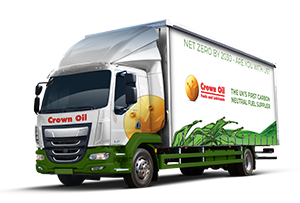Paraffin Overview
Paraffin comes in both liquid and solid forms and is used throughout the UK in a wide range of industries. It’s an extremely versatile product, and so has a wide range of uses including heating oil, beauty products, candles and medicines.
When looking for heating oil, you may have come across the terms paraffin or kerosene; both refer to the same oil that’s used to heat off-the-grid properties heat off-the-grid properties and industrial buildings. With its many uses, it can get a little confusing, so we’ve put together a guide for an insight into the adaptable fuel.

What is paraffin?
Paraffin, also known as liquid paraffin, paraffin oil or kerosene, is a combustible hydrocarbon liquid that’s burned as a fuel. Paraffin fuel refers to a mixture of different types of hydrocarbons with the chemical formula CnH2n+2; specifically, paraffins are a group of alkanes.
Paraffins are key components of petroleum and natural gas. Those with fewer than 5 carbon atoms per molecule tend to be gases at room temperature, whereas those with between 5 and 15 carbon atoms are usually fluid in form. Straight-chain varieties with over 15 carbon atoms per molecule are solid at room temperature.
Paraffin is less hazardous than gasoline and boils at 150-275oC. It can be extracted from coal, wood and oil shale, but is mostly acquired from the distillation of petroleum.
When first discovered, the cost of producing paraffin was high, but prices fell when new sources and cheaper methods of refining were later uncovered.
What is paraffin used for?
Paraffin has a variety of practical uses in industries that range from medicine and agriculture to cosmetics. While the very first usage of paraffin dates back to the 19th century as paraffin wax in candles, the oil has since found use in many other forms. Paraffin is commonly used as a fuel for jet engines and rockets, as well as a fuel or fuel component for diesel and tractor engines.
Common paraffin uses include:
- Paraffin wax – a white or colourless soft solid used as a lubricant, in candles, crayons, electrical insulation and petroleum jelly
- Liquid paraffin (drug) – a very highly refined mineral oil used in cosmetics and medicines
- Alkane – a saturated hydrocarbon used as a chemical solvent and in plastics
- Kerosene – a fuel also known as paraffin
- Mineral oil – any of various colourless, odourless, light mixtures of alkanes in the C15 – C40 range from a non-vegetable (mineral) source, particularly a distillate of petroleum
- Petroleum jelly (soft paraffin)
- Tractor vaporising oil – a fuel for petrol-paraffin engines
- Paraffin fuel – for prama-stoves or paraffin stoves, used in households in rural parts of South Africa
Liquid paraffin is a mineral oil that comes in two forms: either heavy liquid paraffin oil or light liquid paraffin oil. The terms kerosene and paraffin overlap, where the latter is used as a liquid fuel. Whereas paraffin wax is a waxy solid, liquid paraffin is more viscous and highly refined and can be used as a laxative.
Other uses of paraffin include:
- A coolant for electrical systems
- A hydraulic fluid
Paraffin history
Paraffin wax is acquired from petroleum by dewaxing light lubricating oil stocks. It was first produced in 1830 by Carl Reichenbach in Germany and commemorated a key advancement in candle-making technology, as its burn was cleaner, more consistent than tallow candles and was cheaper to produce.
Initially, paraffin wax had a low melting point; however, the addition of stearic acid later solved this. Paraffin wax production was thriving in the early 20th century from a rise in the meatpacking and oil industries, which generated paraffin and stearic acid as by-products.
How is paraffin wax made?
Paraffin feedstock is slack wax, a combination of oil and wax and a by-product from the refining of lubricating oil. Firstly, the oil is removed (de-oiled or de-waxed) from the slack wax and separated by crystallisation. Generally, the slack wax is heated, mixed with a solvent such as ketone and then cooled. The wax then crystallises out of the solution, and the oil remains before the mixture is then filtered into two streams:
- Solid – wax plus some solvent
- Liquid – oil and solvent
Once the solvent is retrieved by distillation, the subsequent products are “product wax” (or “press wax”) and “foots oil”. The lower the percentage of oil in the wax, the more refined it is (semi-refined vs fully-refined).
The product wax may be processed more to remove any colours and odours. The wax may then be blended to achieve specific required products, such as penetration and melt point. The paraffin wax is then supplied in either liquid or solid form.
What are the benefits of using paraffin wax in beauty products?
When used in cosmetics, paraffin wax is commonly applied to hands and feet. Paraffin has a low melting point, allowing it to melt into a liquid at a temperature that’s not too hot and is safe to touch. It has a natural ointment and helps to soften skin. You may have seen women dipping their hands or feet into an opaque white or pink substance at the salon.
Paraffin is used in many beauty products as it’s cheap. It adds moisture and continues to boost moisture levels once the treatment is complete. It also helps open pores and remove dead skin cells, making the skin look fresher and smoother. Paraffin also has a long history of treating many physical conditions, such as arthritis and increasing blood flow.
Paraffin vs kerosene
If you’ve been researching heating oil, then you’ve probably come across the terms paraffin and kerosene. This can depend on your location, as the term kerosene is popular in America, Canada, New Zealand, Argentina, India and Australia, whereas paraffin is more common in the UK, Chile, Norway and South and East Africa.
However, while both fuels have similarities, paraffin has a wider meaning and range of uses. So, before we go further into their differences, it’s important to also understand kerosene.
What is kerosene?
Kerosene (heating oil, 28-second oil or #1 diesel fuel oil) is a combustible hydrocarbon liquid that’s name derives from Greek κηρός, which means wax. It’s the best fuel to power your boiler to provide heating and hot water as it’s clean, light and efficient and is used by over 1.5 million off-the-grid homes across the UK. With a high flashpoint, it’s an extremely safe fuel for domestic heating systems.
Kerosene is a combination of hydrocarbons, but its precise chemical composition depends on its source. Its main elements are saturated straight-chain and branch-chain paraffins, as well as cycloparaffins, hence why it’s often referred to as paraffin.
Kerosene uses
Before the widespread adoption of gas and electricity, kerosene was used worldwide for lighting and heating, and this is how Crown Oil began. In 1927, founder Harry Greensmith (who had the affectionate nickname “Harry Lamp Oil”) began selling kerosene door to door in Heywood, Greater Manchester, before founding Crown Oil and expanding to supply a wider product range more nationally.
To order kerosene from Crown Oil, call us today on 0330 123 1444 or fill in the form and a member of the team will be in touch.
Kerosene has several additional uses, such as:
- to provide lighting in oil lamps
- for fuel in jet engines
You can learn more in our kerosene guide.
So can I use paraffin instead of kerosene?
In the UK, when talking about heating oil, kerosene is commonly referred to as paraffin, so it’s most likely the same product. However, paraffin can sometimes refer to a more refined and distilled form of kerosene, allowing it to be used indoors, such as in lamps and stoves. This form of paraffin often contains additives to reduce its odour.
Paraffin vs diesel
Kerosene is sometimes called #1 diesel fuel oil, and regular diesel is given the name #2 diesel fuel oil. Some people consider it similar enough that they use it interchangeably with regular diesel (#2).
Kerosene is lighter than regular diesel (#2), hence why it’s often called #1 diesel. This means it contains slightly less energy – around 135,000 BTU per gallon compared to 139,000 BTU per gallon for regular diesel.
Kerosene has a lighter viscosity than regular diesel, which makes it burn at a hotter temperature in an engine or boiler (and therefore more efficiently) than diesel. However, as it burns drier and with less lubricity than diesel due to its lower aromatic compound content, fuel pumps, gaskets and valves may experience greater wear when running on kerosene.
You can learn more about diesel fuel in our fuels and oils guide, which explains how paraffins and fuel oils like kerosene and diesel fuels are different.
At Crown Oil, we are one of the UK’s leading paraffin suppliers. We deliver paraffin oil (kerosene) to a wide range of customers within 48 hours of order. To find out more about paraffin or to place an order for paraffin, you can call our fuel experts on 0330 123 1444.





